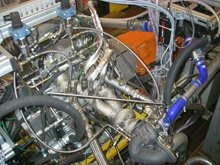 The first bendable, touch-screen display will be used by the military.
The first bendable, touch-screen display will be used by the military.
E Ink, based in Cambridge, MA, already supplies displays that are easy to read in direct sunlight and require little power for both the Amazon Kindle and the Sony Reader, compared to LCDs and plasma screens. E Ink's technology uses a layer of microcapsules filled with submicrometer black and white particles to create a low-power, reflective screen.
Ultimately, though, the goal is to make displays that are not only flexible, but that also respond to touch. The first flexible electronic-paper product, the Readius, is due to launch later this year. This electronic reader features a roll-out E Ink display made by Polymer Vision, based in the Netherlands.
Sri Peruvemba, VP of marketing at E Ink, says that adding touch sensing to this kind of display presents a whole new set of challenges. There are a number of ways to make screens touch sensitive, he says, but most are designed to work with a rigid screen.











